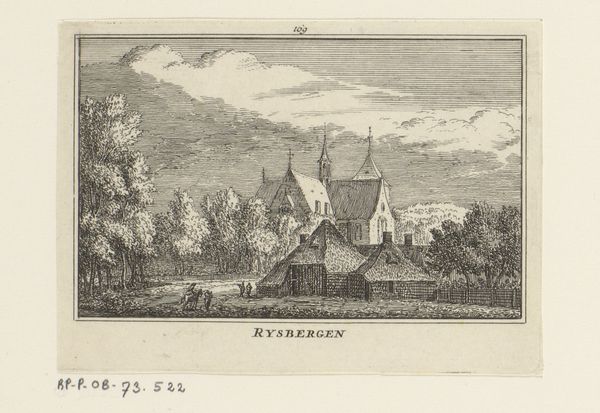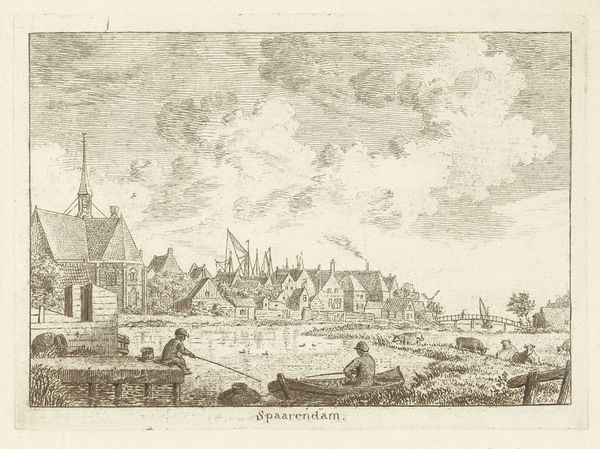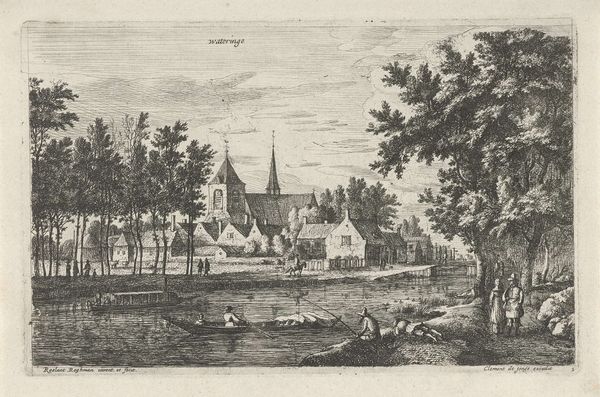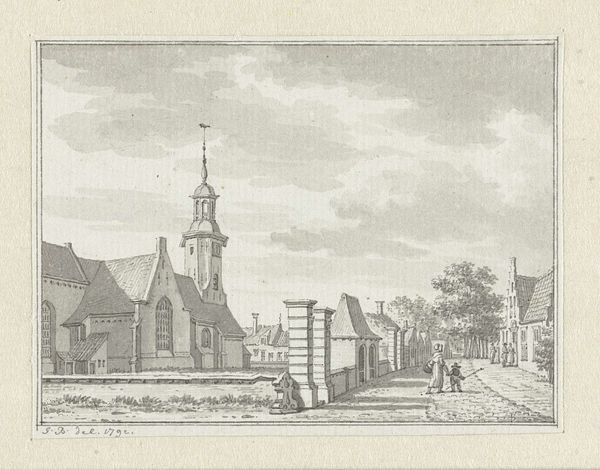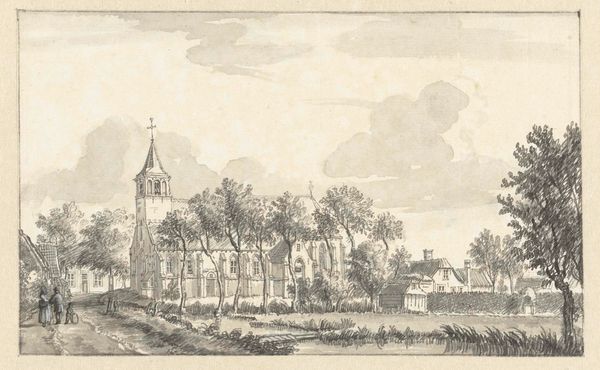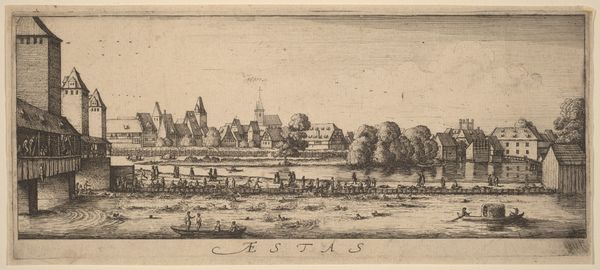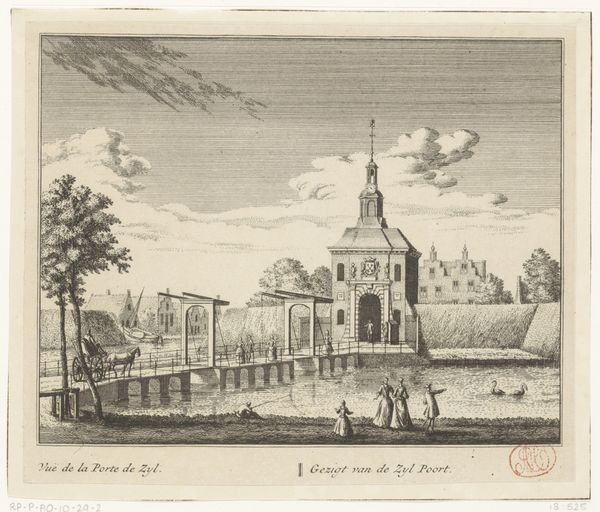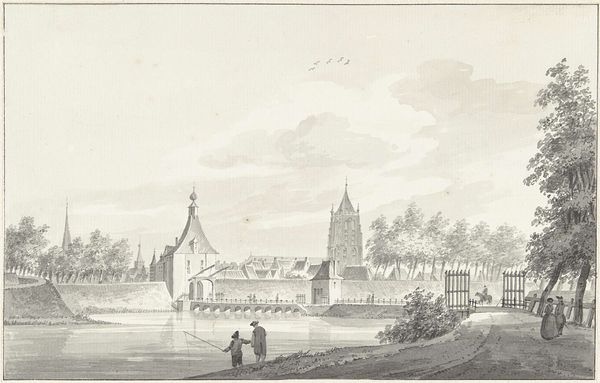
drawing, print, paper, ink, engraving
#
drawing
#
baroque
#
dutch-golden-age
# print
#
landscape
#
paper
#
ink
#
cityscape
#
engraving
Dimensions: height 80 mm, width 115 mm
Copyright: Rijks Museum: Open Domain
Abraham Rademaker etched this view of Rees sometime between 1675 and 1735. The skyline bristles with spires, a visualization of faith and aspiration, yet the most striking symbolic element may be the humble windmill. Windmills, these turning giants, have long been more than mere machines. They are symbols of human ingenuity, harnessing nature's power to transform the world. Think of Don Quixote tilting at windmills, a tale of idealism clashing with reality. The windmill becomes a symbol of the dreams and follies of man. In earlier times, the cross atop church spires served as the highest point in a town. As you see here, these buildings are still prominent, but the windmill is as large as they are. What does it mean that these technologies can coexist in the landscape? Does the future hinge on technological advancement or the church? Such are the questions that come to mind when looking at this image, hinting at the shifting balance between the sacred and the practical in the modern psyche, a dance of progress and tradition.
Comments
No comments
Be the first to comment and join the conversation on the ultimate creative platform.

